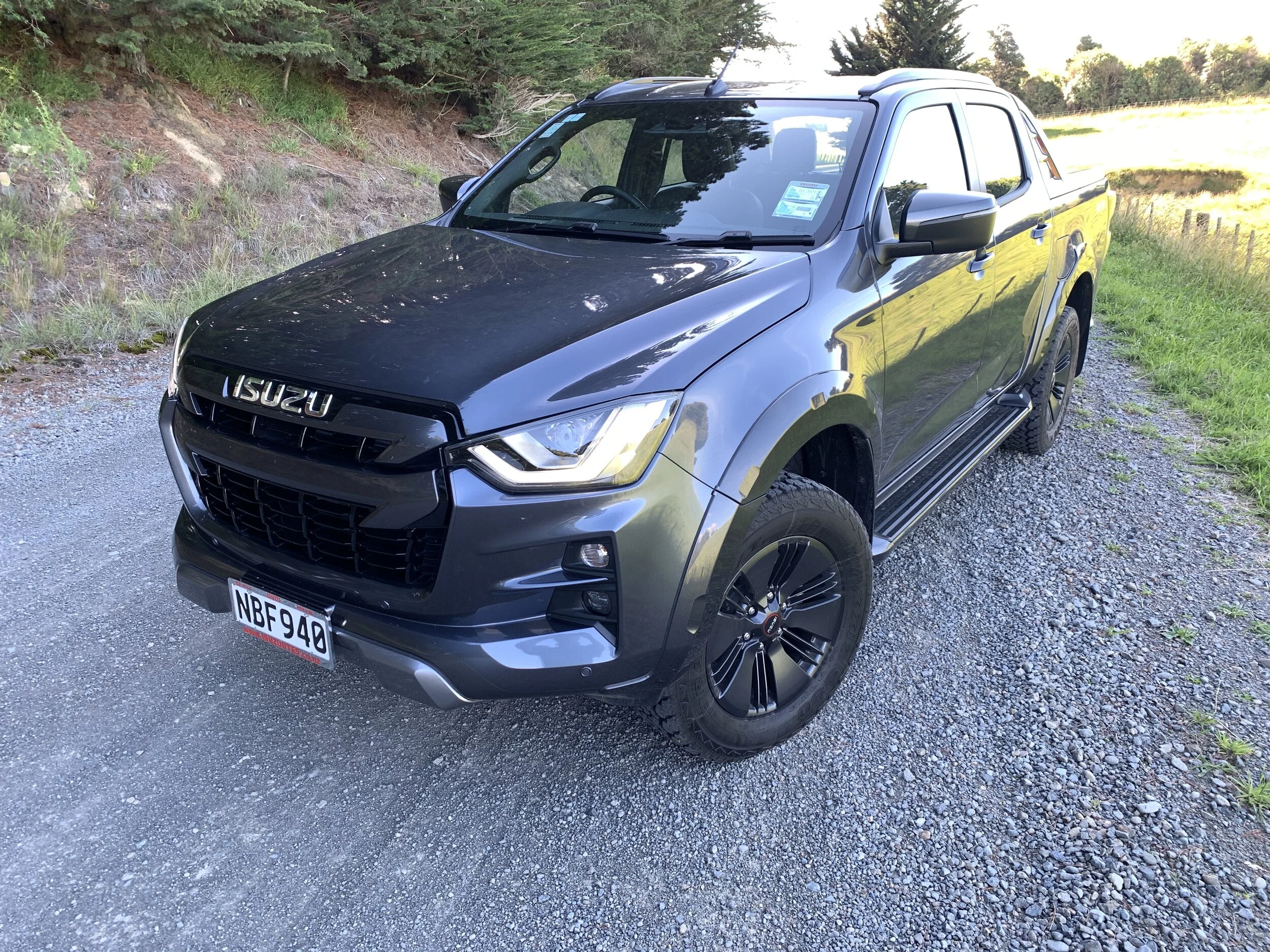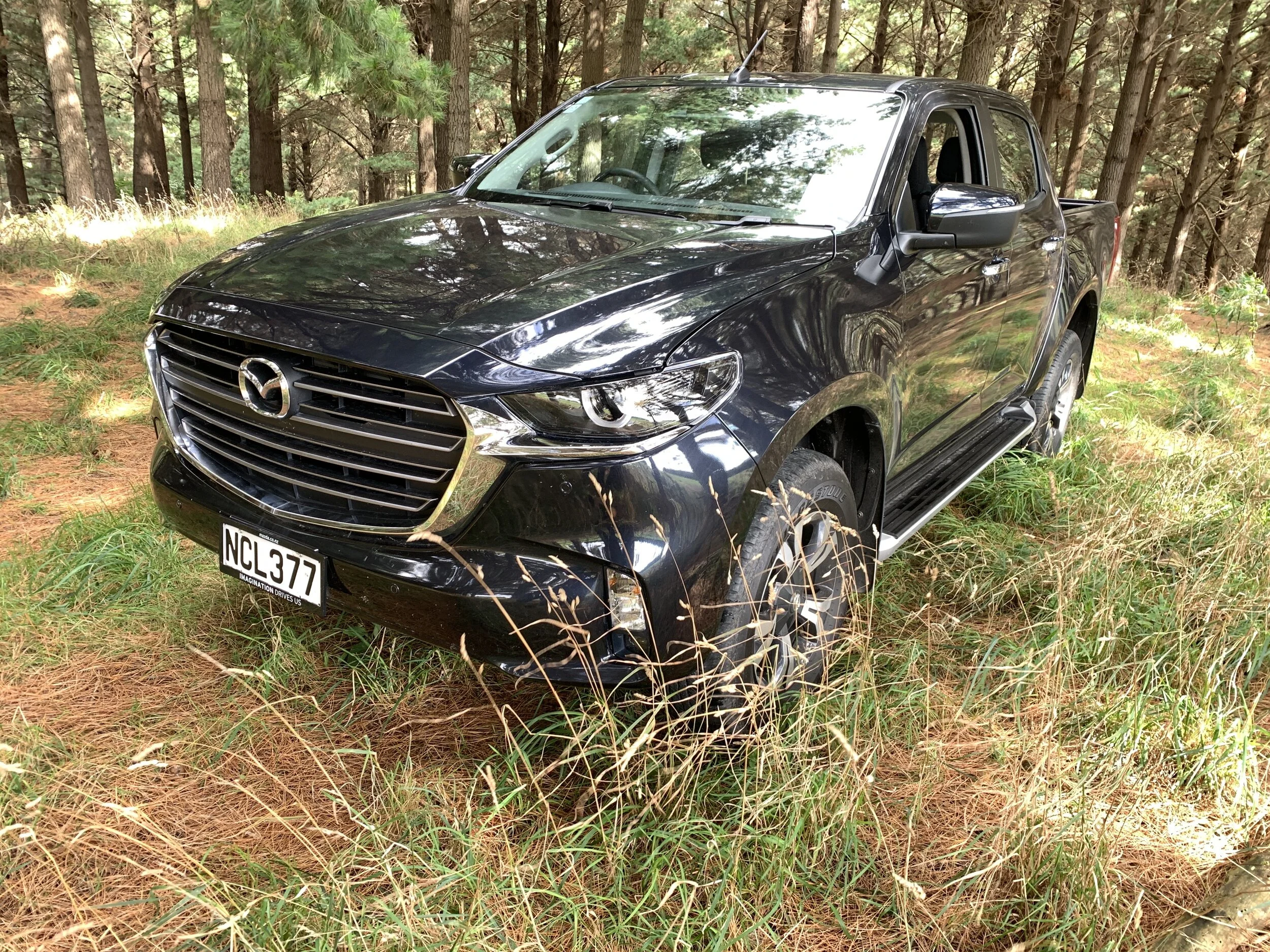What will your new ute cost in 2022?
/Government says the Clean Car impost on one-tonne utes will be around $3000 … in fact, some will carry a much heavier financial burden from the start of next year when their CO2 outputs are measured in dollars.
Argument that utes are genuinely used as workhorses is valid, yet the plushest variants have clearly been buyer favourites.
AS hero utes go, it is truly old school.
Manual, rear-drive, few frills: The Nissan Navara SL double cab is as simple and, at $45,490, as cheap as this type of vehicle can get these days.
A pure workhorse is hardly star material in today’s environment – but wait until next year.
From January 1 this derivative could well become a something of a celebrity stand out.
Among all the one-tonne utes sold here, it is the variant least affected by Clean Car levies set to add thousands of dollars to this kind of vehicle’s bottom line.
June 13’s announcement of the new Government rules suggested Kiwis will pay roughly a $3000 penalty for their favourites from 2022, with expectation this impost might rise again in 2023.
Actually, the 3.0-litre that powers the fraternal Mazda BT-50 and Isuzu D-Max seems to be the only engine to jackpot at $3k. Bigger hits await.
What tops the category blacklist? That’ll be the sector’s most expensive choice, Volkswagen Amarok V6. But it isn’t alone in the naughty corner.
Assuming the powertrains they represent with right now are still in circulation when the levies come into play - and that’s not an absolute given - China’s budget end LDV T60 and the GWM (for Great Wall Motors) Canyon, will also be subject to the maximum possible loading of $5175 and thus also carry the same weight of shame hefted by the grubbier, mega-sized US-sourced Chevrolet Silverado and RAM 1500.
The clampdown on high CO2 emitters to reduce environmental pollution isn’t just about utes.
Yet a fair swag of the estimated 74,600 and 107,400 vehicles that will become more expensive to buy as of January 1 will either be those or sports utilities.
You know full well why there are .. um .. ‘strong’ feelings from ute sellers and supporters about the fairness of utes being picked out/on as poor citizens.
In core labour-first application, utes definitely have a crucial role and it’s hard to imagine how they can be substituted.
Yet reality is that types tailored less for outright toiling than to best suit family use and recreational play – Ford Ranger Wildtrak, Toyota Hilux SR5 and so on - have long been strongest sellers.
The rising attraction of plush, profitable doublecab turbodiesel derivatives tracks closely to the market having grown from 13.4 percent in 2004 to 23.4 percent year to date. A 75 percent hike.
A Stuff trawl of New Zealand Transport Agency (NZTA) data revealing just nine percent (nearly 429,000) of 472,424 utes registered) list as actual work, as opposed to personal passenger, vehicles is a deflation of industry assertion about most are bought for legitimate purpose.
Immediate fan reaction to the Clean Car announcement has been defiance; Toyota and Ford, which together command 51 percent of monthly volume, say orders have increased.
It’s an extra impetus to the probability of the market-dominant Ranger achieving a category-record 11,000 registrations this year.
Next year the environment becomes much hostile territory, yet it’s hard to imagine any sector contender giving up the fight; the profit and volume reliance is too great. No more so than for Ford. Though striving to broaden its portfolio and passenger push, without Ranger they’d be a bit player.
With relatively poor CO2 counts as a common weak point, utes had it coming with CO2 tightening.
Can they be saved? An increasing count of new car powerplants calibrate to meet Europe’s latest emissions standard, Euro 6, which sets a higher mark for exhaust cleanliness that our Euro 5 standard, but no ute does.
Government has aspiration to implement EU6 but no firm timeframe is set; if we work in with Australia, it might not happen until 2028.
Ironically, the VW Amarok V6 stepped to Euro 6 in our market when sourcing briefly switched from Argentina to Germany, only to lose that edge when production reverted back to South America.
The Navara runs a Renault powertrain that can be tuned to Euro 6 expectation. However, Nissan NZ has confirmed the vehicle as it sells here is in Euro 5 format, seemingly because that’s been the preference in Australia, a conjoined market.
Euro 6 vehicles are easy to pick because they typically require AdBlue, a diesel particulate scrubber, that needs to be added to a separate tank to clean the exhaust emissions. The Germany-sourced Amarok has one, the equivalent from Argentina does not.
In current state, what appears to give SL Navara edge over other variants is the turbocharger count; in this model, the 2.3-litre engine runs a single turbo. Every other edition is biturbo.
Nissan advertises the SL’s CO2 count as being 189 grams per kilometre – ostensibly, that’s three grams below the Government’s starting point for penalties.
Except … it’s not.
The CO2 data published for utes is no accurate gospel as its not collated to latest standard.
WLTP (World harmonised Light vehicle Testing Protocol) tests were introduced to the global automotive sector in late 2018 to give a more real-world measure of carbon emissions and energy consumption, but many vehicles, utes included, still provision with data achieved from applying the preceding NEDC (New European Driving Cycle) format damned for being up to 30 percent off target.
With responsibility to setting the Clean Car penalty system, the Ministry of Transport has implemented a factoring formula that converts NEDC counts to WLTP equivalents.
Some say the calculations still this still let utes off lightly because it’s all about establishing levels when they’re being driven as a car would be. Were they measured in a working state – say, hefting and hauling a load – they’d be pumping out much more.
Even so, even as it calculates, the MoT formula outcomes are not good news for utes because, as the information below shows, the CO2 numbers ALWAYS increase.
Including for Navara SL. Once the mathematics apply to its NEDC result, it loses safe zone sanctuary and instead places – by a mere four grams - above the 192g/km line.
Roughly speaking, every gram over carries a $55 penalty. So, if the SL price tag rises $220 next year, you’ll know why.
Meantime, here’s a breakdown on impact on popular lines:
Ford Ranger
Published NEDC count: 177-234 grams per kilometre
MoT estimated WLTP count: 205-267
Expected levy: $1090 to $4660.
Ford is in an interesting position. Ranger as we currently know it has two relatively clean engines; a 2.2-litre turbodiesel (that’s only special order and limited to one variant, so wasn’t considered here) and the 2.0-litre four-cylinder biturbo that has been progressively been pushing into more variants. On the dark side is the 3.2-litre five-cylinder turbo that quite a few customers still prefer. Might the latter be gone by Xmas?
Potentially, yes. But bear in mind current Ranger will be replaced around mid-2022. The replacement is going to be on an evolution of the current platform, with alterations to allow for hybridisation and electrification, according to Australia’s Wheels mag. But that stuff’s not coming straight away. Initially it’s tipped to be coming with an updated biturbo four-cylinder and a turbodiesel V6, probably a variant of the 3.0-litre Powerstroke unit offered in North America’s F-150 truck.
Toyota Hilux
Published NEDC count: 187-212
Estimated WLTP count: 216-243
Expected levy: $1730 to $3280
Everyone knows a hybrid Hilux is tied down for New Zealand introduction. It’s the ‘when’ that remains a big mystery. And will it instal into the current Hilux. On past timeframes, a new Hilux could be expected to arrive in 2024: Might it best now to wait?
Of course, the usefulness of electric assistance is all the more obvious now. Petrol-electric or diesel-electric? As much as the latter would make more sense, it would also be a first for Toyota, which favours petrol-electric hybrid technology in the passenger car line-up.
In current form, trad turbodiesel Hilux at least benefits from an improved version of its core 2.8-litre, which for 2021 not only received more power and torque but achieved better engine management and a redesigned diesel particulate filter.
Mitsubishi Triton
Published NEDC count: 215-224
Estimated WLTP count: 246-256
Expected levy: $3450 to $4030
Seems hardly fair to inflict this pain onto the sector’s oldest ute. Assuming that’s how it works out.
As with Ranger, Triton is due to be replaced in 2022; it might have happened already, if not for Covid-19. The next one will be born out of the alliance with Renault and Nissan and there’s talk of plug-in hybrid technology, which Mitsubishi already employs in its SUVs and has confirmed is tough enough to withstand transfer to a ute. Assuredly, it might also shift to Navara’s 2.3-litre twin turbo.
Nissan Navara
Published NEDC count: 189-208
Estimated WLTP count: 196-239
Expected levy: $580 to $3050
The Navara’s 2.3-litre is not the gruntiest engine in this class but t cleans up – relatively speaking - for emissions and that reflects in it being hit reasonably leniently. All thanks to Renault, which developed this high-tech unit – first sited in for a van – to meet Europe’s rigorous air cleanliness standard. Shame, all the same, NZ doesn’t get the EU6 version that availed in this model in some other markets.
Isuzu D-Max/ Mazda BT-50
Published NEDC count: 200-207
Estimated WLTP count: 230-238
Expected levy: $2530 to $2990
Though it maintains the 3.0-litre capacity associated with the previous D-Max, the ‘4JJ3-TCX’ turbo diesel that has gone into these twinned model lines is new. Priority was to make it more powerful, quieter and more refined performance so as to deliver noticeable real-world driveability improvements. It was also engineered to comply with Euro 5. If only they’d hit for ‘six’.
Volkswagen Amarok
Published NEDC count: 219-241
Estimated WLTP count: 251-281
Expected levy: $3740 to $5175.
Ouch, right? Being the sole V6 in this category has been a strong point of difference, and rightly so – its smooth and punchy; just the ticket to help a vehicle introduced in 2011 maintain relevance. But now there’s a new price to pay for that pleasure.
A new Amarok is coming and it’ll be spun off the next Ranger. Whether or not VW will continue to install its own powerplants is unknown. Logically they wouldn’t; it’d pump up the price and, anyway, Ford has that base covered. Still, talk is also that while the new Ford is 2022 vehicle, the next Amarok will be held back until 2023.
LDV T60
Published NEDC count: 233-254
Estimated WLTP count: 266-28
Expected levy: $4600 to $5175.
Potentially the last thing a model that released on strength of being the cheapest four-wheel drive double-cab ute in the country needs to heft is an XL-sized penalty, yet this suggests a dark side to the VM Motori 2.8-litre’s muscularity. LDV has advised this powertrain is on a run-out and will be replaced, in September, by a twin-turbo 2.0-litre. No emissions data for this new engine has been shared but a spokesman insists it will be “a much cleaner engine.”
GWM Cannon
Published NEDC count: 219-246
Estimated WLTP count: 251-280
Expected levy: $3740 to $5175.
Where one Chinese brand goes, another follows. Or so it seems. Things have come a long way for Great Wall Motors since the Wingle of 2006, imported here as the Steed, but not far enough it seems. The Cannon’s 2.0-litre four-pot, plucked from the Haval H9 SUV, is firing the wrong kind of shots to appeal under our legislation.
(A short form version of this story also appeared on Stuff.co.nz)


























